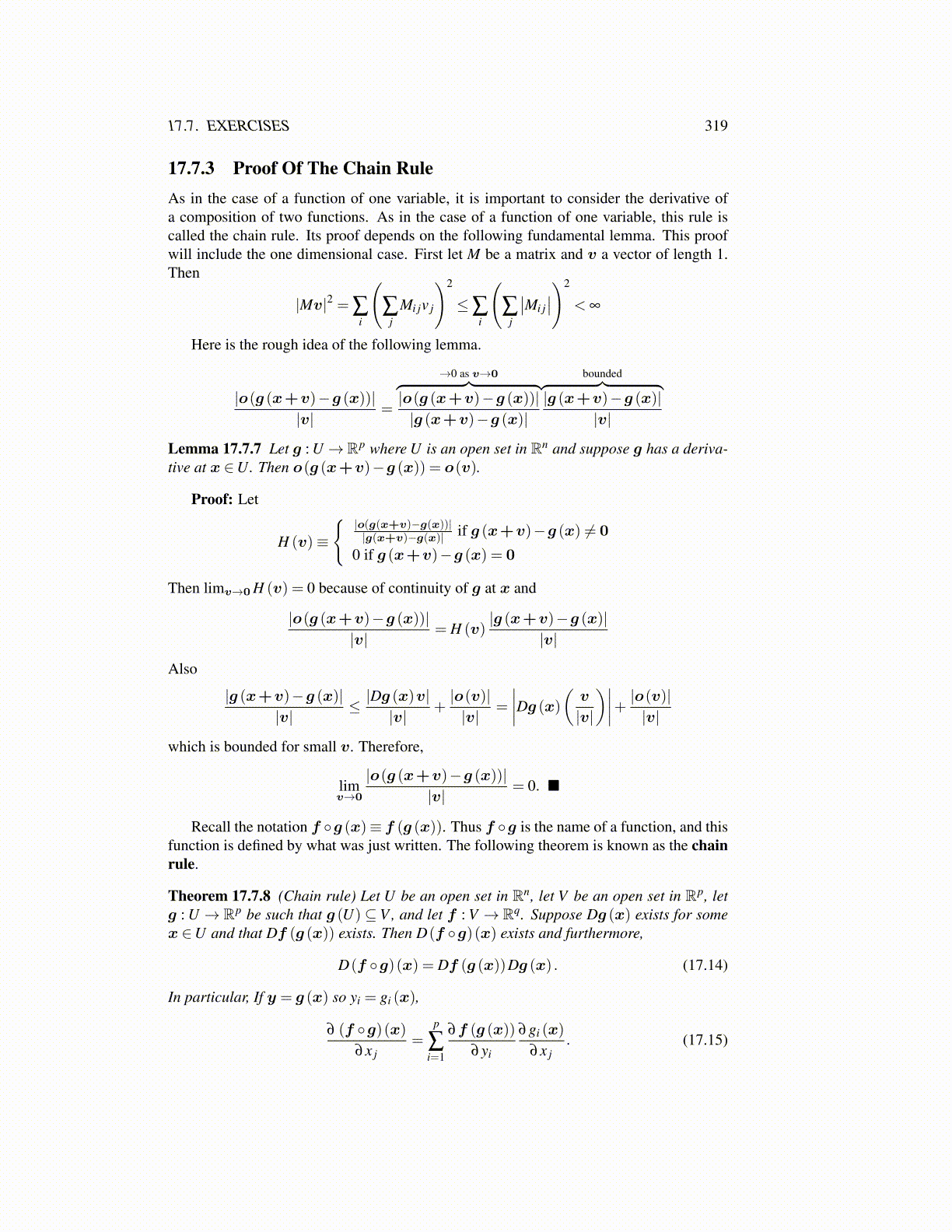
17.7. EXERCISES 319
17.7.3 Proof Of The Chain RuleAs in the case of a function of one variable, it is important to consider the derivative ofa composition of two functions. As in the case of a function of one variable, this rule iscalled the chain rule. Its proof depends on the following fundamental lemma. This proofwill include the one dimensional case. First let M be a matrix and v a vector of length 1.Then
|Mv|2 = ∑i
(∑
jMi jv j
)2
≤∑i
(∑
j
∣∣Mi j∣∣)2
< ∞
Here is the rough idea of the following lemma.
|o(g (x+v)−g (x))||v|
=
→0 as v→0︷ ︸︸ ︷|o(g (x+v)−g (x))||g (x+v)−g (x)|
bounded︷ ︸︸ ︷|g (x+v)−g (x)|
|v|
Lemma 17.7.7 Let g : U → Rp where U is an open set in Rn and suppose g has a deriva-tive at x ∈U. Then o(g (x+v)−g (x)) = o(v).
Proof: Let
H (v)≡
{ |o(g(x+v)−g(x))||g(x+v)−g(x)| if g (x+v)−g (x) ̸= 0
0 if g (x+v)−g (x) = 0
Then limv→0 H (v) = 0 because of continuity of g at x and
|o(g (x+v)−g (x))||v|
= H (v)|g (x+v)−g (x)|
|v|
Also
|g (x+v)−g (x)||v|
≤ |Dg (x)v||v|
+|o(v)||v|
=
∣∣∣∣Dg (x)
(v
|v|
)∣∣∣∣+ |o(v)||v|
which is bounded for small v. Therefore,
limv→0
|o(g (x+v)−g (x))||v|
= 0. ■
Recall the notation f ◦g (x)≡ f (g (x)). Thus f ◦g is the name of a function, and thisfunction is defined by what was just written. The following theorem is known as the chainrule.
Theorem 17.7.8 (Chain rule) Let U be an open set in Rn, let V be an open set in Rp, letg : U → Rp be such that g (U) ⊆ V , and let f : V → Rq. Suppose Dg (x) exists for somex ∈U and that Df (g (x)) exists. Then D(f ◦g)(x) exists and furthermore,
D(f ◦g)(x) = Df (g (x))Dg (x) . (17.14)
In particular, If y = g (x) so yi = gi (x),
∂ (f ◦g)(x)∂x j
=p
∑i=1
∂f (g (x))
∂yi
∂gi (x)
∂x j. (17.15)